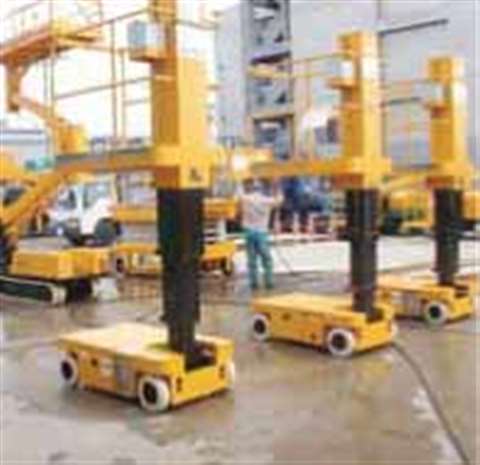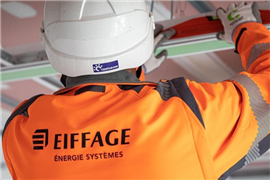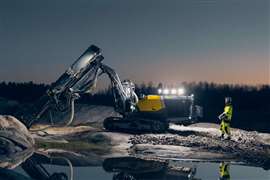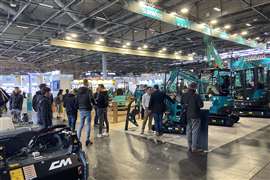Japan: growth while mature
19 March 2008

One of the many fascinating aspects of the Japanese equipment rental market is watching how the big players wrestle with the challenges of operating in a developed, highly competitive sector, including that for access equipment. In that respect, it offers access companies in other countries a kind of alternative ‘how–to’ guide to rental.
Some of the challenges faced by Japan's ‘big five’ access renters – Aktio, Kanamoto, Nikken, Nishio Rent–All and Sumisho Rent Support– would, indeed, be recognized by most rental company anywhere else in the world. According to Kanamoto, which is Japan's fourth–largest renter overall and has the fifth–largest access fleet (3000 units), total rental revenues in Japan have actually been falling in the past four or five years, from a high of over ¥1000 billion (∈6.7 billion) at the start of the decade to under ¥900 billion (∈5.5 billion) now. This is despite a largely stable environment for construction investment.
Yuichi Takayama, manager of Kanamoto's investor and public relations office, tells AI that I one of the reasons for the fall is pressure on rental pricing, particularly in certain popular machines. A fall in public expenditure on infrastructure is another key reason for the decline.
That said, general market conditions are held to be reasonable at the moment. A spokesman for Nishio Rent–All, which has Japan's second–largest access fleet (10300 units) behind Nikken (17961), tells AI the current market is “in good condition
I now. Especially for equipment used for private sector construction such as aerial work platforms, where demand is stable.”
Meanwhile, Nikken's director of corporate planning, Mr Masayoshi Seki, tells AI that although the rental market is “rather flat”, it is not standing still; “instead, it is in the process of transformation from public to private sector and from the survival of also–rans to a limited number of players.” Private sector work is busiest in the major urban centers, says Mr Seki, and is driving a demand for small, electric aerial platforms in particular. So much so, in fact, that half of Nikken's investment in new equipment this year will be in aerials.
And even if rental rates are under pressure in places, several big rental players still feel there is scope for the market to expand. Kanamoto reports that Japan's ‘rental reliance’ rate – that is the proportion of all equipment on sites that is rented, in unit terms – has been creeping up for several years and is now just over the 50% mark. (It is important to note that this rate specifically excludes five types of equipment that have very high rental penetrations, including aerial platforms.)
Kanamoto's Mr Takayama says around 1.7% of all construction spending in Japan goes to rental companies. This is a fairly stable number, he says, although is also creeping up: he thinks it unlikely to exceed 2%.
At Nishio, there is agreement that the trend towards renting continues to be positive. It observes that, while the rental market is influenced by changes in construction investment, “the degree of construction companies' dependence on rental is gradually increasing.”
Nishio says that owners are being forced to buy new equipment to meet new laws. Currently those restricting emissions are significantly influencing decisions. “Thus, we foresee that there will still be room for the rental business to expand.”
Japan's rental market shares with its western cousins a trend towards consolidation. Kanamoto estimates that the four biggest “broad market area [general rental] players” represent about 32% of the market, while official Japanese statistics reveal that the top–50 players represent something like 70% of the total. That leaves around 2000 small–and medium–sized, often family–owned companies that – like their counterparts in North America and Europe – are busy being acquired by the major players.
Figures show that the market share of the bigger players has been growing steadily as they acquire companies. Kanamoto told AI that it plans to
I continue to make acquisitions, and Mr Takayama says that companies with annual revenues of ¥3–5 billion (∈18–30 million) will be ideal targets.
Aktio, Japan's number one rental company overall, with the third–largest access fleet (6000 est'd), is another that is buying smaller firms. A spokesman says that while Aktio's underlying growth has been modest or stable, it has been posting 20–30% revenue increases because of acquisitions. The spokesman says Aktio's strategy is to continue to grow by this means.
If Aktio sees acquisitions as the key to growth, both Nishio and Kanamoto have other approaches. Nishio sees opportunities to strengthen its activities “in the sectors of industry or work operations where rental use has been small in the past, and capture new markets and customers. Especially, we expect rental demand in the mechanisation of various maintenance tasks inside factories and other facilities.” This latter trend will see Nishio invest in more industrial–type aerial platforms, both Japanese and western–built.
This investment targets increased market share by “…providing value–added proposals – in terms of safety and construction techniques” for particular jobsite applications. Among those might be stimulating increased use of other types of access equipment. No Japanese company appears in AI's top–20 mast climber fleets, and only Nikken appears, in ninth position, in the telehandler fleet ranking.
Kanamoto, on the other hand, is combining product diversification with depot openings (from the current 148) to grow its business. New products being added to the fleet include 100 underbridge inspection platforms from Furukawa Unic.
Kanamoto's Mr Takayama makes the broader point that Japan's post–WW II infrastructure is ageing and needing replaced or refurbished, and this is an area that he thinks will see a lot of investment in the coming years. It also helps explain the big investment in the underbridge inspection units.
In addition, Kanamoto will shift the focus of new depot openings to new areas in western Japan, as well as establishing additional locations in highgrowth metropolitan areas such as Tokyo, Nagoya and Osaka.
Nikken is taking a different approach to the other players. Rather than acquire companies that have similar equipment, it is looking to expand into the industrial maintenance sector by buying small, specialist industrial rental firms. Many of these will be in the big cities. However, although like the other big players it is opening more depots in the cities and closing some in rural areas, it is still looking for work in the rural areas through alliances with local rental companies.
A final strategy for big players is involvement in markets outside Japan, although access does not yet seem to play a major role. Foreign activities take various forms, with Nishio Rent–All having established rental subsidiaries in Malaysia, Thailand and Singapore; Aktio in Thailand and and Singapore; and Nikken with its US subsidiary (see box story). Note as well, these foreign outposts are helpful in selling on used equipment from their fleets.
These foreign activities are interesting, but it is how Japan's rental companies develop access equipment use in their home market that is most important, of course.






